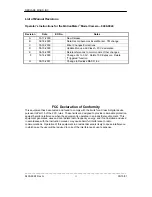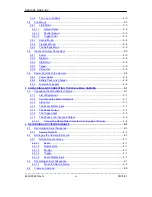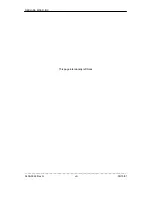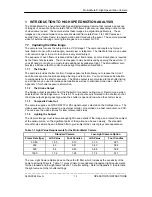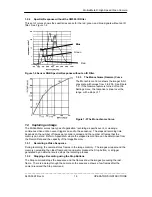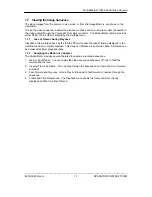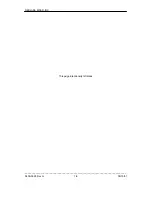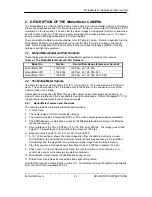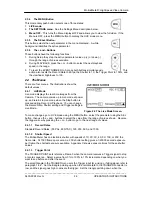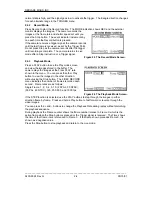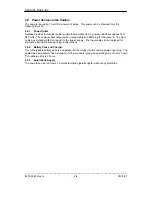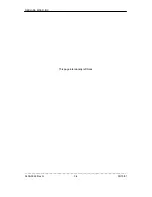
REDLAKE MASD, INC.
_____________________________________________________________________________
9400-0024 Rev G
1-4
05/15/01
1.3.3
Stopping a Recording using a Trigger Input
The
Motion
Meter trigger input circuit detects a signal from an external source and stops the
recording at the frame active at the receipt of the trigger. This enables you to record an event
that either occurs very quickly, or happens without warning and when the camera operates
unattended. You should always use the trigger if you want to have the event coincide with the
Frame 0, since the Stop button has a propagation delay.
You can set the Trigger Point to determine how many frames you record before the event. The
active frame when the trigger is received is designated Frame 0. Frames following Frame 0 have
positive numbers, and the frames that precede Frame 0 have negative numbers. Refer to
Section 1.6 for more information.
The Trigger input is always enabled and held at +3.3 volts through a 10K ohm resistor. You
supply the trigger signal to the trigger input in one of the following ways. The camera must be set
to receive a rising or falling signal, selected in the Settings menu.
1. An open circuit allows the trigger input to stay at +3.3 volts. The trigger causes a contact
closure that pulls the trigger input down to 0 volts.
2. A closed contact pulls the trigger input down to 0 volts. The trigger opens the contact
causing the trigger input to rise to +3.3 volts.
3. The trigger input operates with TTL or CMOS logic as the trigger source. The voltage from
the source is pulled low by a resistor at the source up to 2K ohms in value. The trigger
causes the signal to go to +3.3 volts to stop recording, and the signal to the trigger input can
go as high as +30 volts.
1.3.4
Synchronization and Controlling the Record Speed
The Phase Lock feature provides a means to synchronize and control the frame rate of the
recorded video. This provides three functions:
•
Record a single frame (Frame on demand).
•
Synchronize two or more cameras together.
•
Slave a camera to an external source such as rotating equipment or a signal generator.
The frame rate during record will follow the source signal and can be at any rate up to the Record
Rate set. The Phase Lock In and Out signals are connected to the Digital In and Out connectors.
Select the Phase Lock function in the Settings menu.
If the rate of recording
varies from a record rate of
60, 125, 250, 500, or 1000
frames per second, the
camera records the events
and assigns an accurate
frame number to each
frame. However, the
elapsed times (ET)
displayed on the menu will
not be the true elapsed
time.
Figure 1-6 The Phase Lock Connections.


